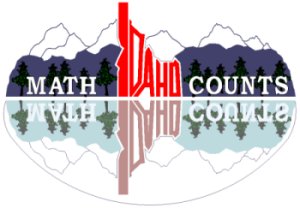|















| |
Idaho Society of Professional Engineers
Friday Update - 10/28/05
UPCOMING EVENTS:
• October 28, 2005 - PE and PLS
Examinations - Boise, Idaho
• October 29, 2005 FE (aka EIT)
Examinations - Boise, Idaho, Pocatello, Idaho, Moscow, Idaho
• November 5, 2005 - Western &
Pacific Region Annual Meeting - Helena, MT
• January 20 - 23, 2006 - NSPE
Winter Meeting - Washington DC
• March 16 - 17, 2006 - ISPE
Annual Meeting - Boise, ID
• July 6 - 11, 2006 - NSPE Summer
Meeting - Boston, MA
Are New Grads Ready to Take
the PE Exam?
In almost all cases, engineers follow the same steps to earning the PE license:
graduate from an accredited engineering program, pass the Fundamentals of
Engineering exam, gain four years of experience under a PE, and then pass the PE
exam. But now, one state licensing board has made a small change in these steps
to licensure, and it’s a change that has been debated within the profession.
The Nevada Board of Engineers and Surveyors
recently announced that candidates for a PE license can now take the PE exam
immediately after graduating from an ABET-accredited engineering program and
passing the FE exam.
According to the board, the change will not affect the actual requirements for
licensure. Before an individual can be licensed, four years of experience will
still be required. However, now candidates can take the PE exam right after
graduation and get it out of the way before they start working in Nevada.
Read the full article.

The Engineering Income and Salary Survey
Are you paid what you are worth?
Are negotiating your salary, moving, or changing jobs?
Does your Human Resources manager at your organization need salary guidance for
engineers?
What are the current trends in structured salary and benefit programs for
engineers?
Discover the answers to these questions and more with The Engineering Income and
Salary Survey!
Access the United States' largest and only real-time engineering compensation
survey that covers over 35 engineering disciplines. The survey is online, and
continuously updated so the data is always current
Subscribe today! Subscription levels are priced for both individuals and
organizations and are tailored for different needs. You can create customized
reports based on criteria you select, as well as, access the most frequently
requested reports, trend analysis, and benefits information. To subscribe, go to
http://nspe.salaries.com and register today! Direct your HR manager to the
same site to ensure your organization is providing equitable pay for hard
working engineers.
Participate and access a FREE individualized report with data from your
engineering level and geographic region. You can participate and/or update your
information all year long, and the new format makes the process easy and fast.
You only need to update the fields that change yearly because the database saves
your information!
Questions? Access
the Salary Survey FAQ.

Purchase
or Participate now!

MATHCOUNTS PROBLEM OF THE WEEK
Can you solve this MATHCOUNTS problem? The answer will appear in next week's
edition of the Friday Update!
Halloween's Coming!
In preparation for Halloween, Jack decided to make a new container to hold his
Halloween candy. He wants to use a wizard’s hat as his candy container to go
with his Harry Potter costume. He made his hat in the shape of a right, circular
cone. It was 12 inches tall when measured up the center of the hat, and it’s
base (the opening) had a 10-inch diameter. Jack wants to know how many cubic
inches are in the volume of his container. Can you figure it out?? (Express your
answer in terms of pi.)
--------------------------------------------------------------------------------
Decisions, Decision…: After three hours of Trick-or-Treating, Alice and
her dad were standing at the end of a neighborhood street with five houses left
to visit. Alice’s dad told her that they were running past her curfew and that
she would only have time to visit three of the five houses. How many different
combinations of three houses could Alice pick from her five choices?
--------------------------------------------------------------------------------
Though this problem is a real TREAT, it’s also a little TRICKY!: Three
friends were able to fill six bags of candy while Trick-or-Treating for three
hours. How many bags of candy could one of the friends fill Trick-or-Treating
for one hour?
Answer to last week’s MATHCOUNTS problem:
The ratio tells us that for every three students who call the season "fall,"
there is one student who calls the season "autumn." We know this is true for
every group of four students. In the class of 28 students, there are 28 ¸ 4 = 7
of these groups of four students. This means that there are seven groups of
three students, or 7 ´ 3 = 21 students who call the season "fall." An equation
that we could have written and used is 3x + 1x = 28. Then we could solve for x
and find the value of 3x.
------------------------------------------------------------------------------
Still using the information we gained from the initial ratio, we see that there
were 7 students out of the 28 students who call the season "autumn." This is 25%
of the students. (We could also get this by knowing that one of every four
students used "autumn.") If 25% of the pie chart is then devoted to this group
of students, the sector of the pie chart would be 25% of 360 degrees, which is
0.25 ´ 360 = 90 degrees.
--------------------------------------------------------------------------------
If we allow x to be the number of "autumn students," then 5x would represent the
number of "fall students." This is a total of x + 5x = 6x students. Then x of
the 6x students use the term "autumn" or x/6x = 1/6 of the students use the term
"autumn."
--------------------------------------------------------------------------------
As we saw with the solution to the previous problem, our total number of
students is represented by 6x, which we now know to be equal to 360. If 6x =
360, then dividing both sides by 6 shows x = 60. The number of students using
the term "fall" was represented by 5x, which we can now see is 5(60) = 300
students.
If you want to see last week's problem again, click
http://www.mathcounts.org/webarticles/anmviewer.asp?a=741&z=104
Idaho Society of Professional Engineers
PO Box 170239
Boise, ID 83717-0239
208-426-0636
Fax: 208-426-0639
E-Mail: mailto:ispe@rmci.net
Web Site: www.Idahospe.org
| |

ISPE
MATHCOUNTS
Program

National Engineers Week - Future City Competition

Board of Professional Engineers and
Professional Land Surveyors
--News
Bulletins
--Meeting
Minutes


|
 Idaho
Society of Professional Engineers
Idaho
Society of Professional Engineers